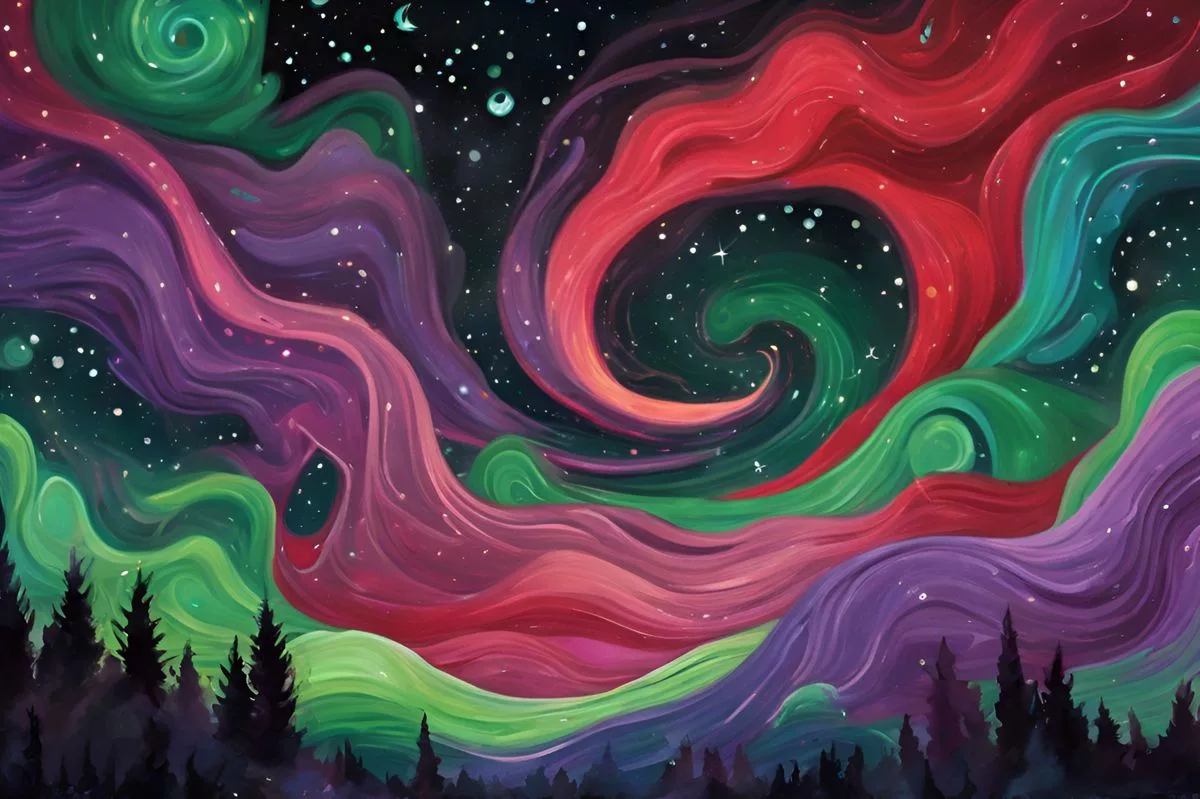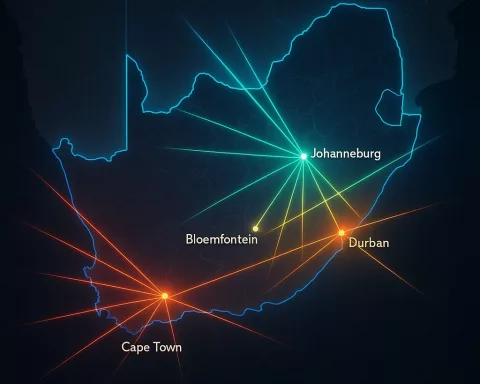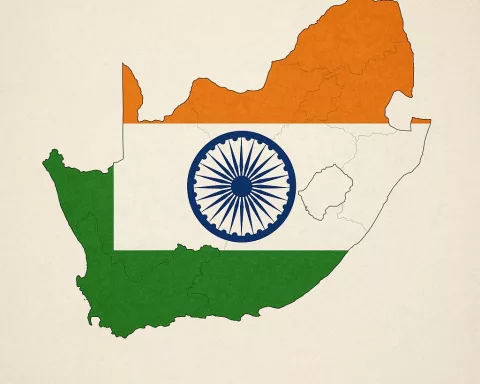The Aurora Australis, or Southern Lights, is a breathtaking light show in the sky, caused by powerful solar flares. This weekend, South Africans might get a rare chance to see this dazzling display due to a strong geomagnetic storm from sunspot 3842. The storm could light up the night with vibrant colors, much like a magical painting across the heavens. While it’s an exciting opportunity, the storm may also disrupt technology on Earth. So, as you gaze up at the sky, remember to enjoy this beautiful connection to the universe above!
What is the Aurora Australis and when can it be seen in South Africa?
The Aurora Australis, or Southern Lights, is a stunning natural light display caused by geomagnetic storms from solar flares. South Africans may witness this celestial phenomenon this weekend due to an intense geomagnetic storm from sunspot 3842, promising a vivid array of colors in the night sky.
A Rare Cosmic Dance
The Southern Hemisphere’s elusive Aurora Australis captivates skywatchers with its breathtaking display, yet its rarity often leaves many longing for a glimpse. This weekend, however, there’s a chance for South Africans to witness this mesmerizing event, courtesy of a potent geomagnetic storm triggered by a powerful solar flare. The Southern Lights promise to transform the night sky in a vivid dance of colors, akin to a visual symphony crafted by the universe itself.
The source of this celestial display, a solar flare from sunspot 3842, emerged as a monumental feature on the Sun, overshadowing Earth by 1.5 times. Classified as an X-class flare, it reached an extraordinary X9.05 intensity, a level unseen by the South African National Space Agency (SANSA) over the last seven years. This remarkable flare, born on October 3, already disrupted high-frequency radio communications and created a temporary radio blackout across Africa, leaving a significant mark on the record books.
Solar flares, awe-inspiring as they are, fall into categories based on strength, with X-class flares being the most formidable. They often herald geomagnetic storms when the Sun expels vast quantities of plasma and magnetic fields into space via coronal mass ejections (CMEs). These ejections, much like a grandiose gesture from a Baroque composer, send ripples across the cosmos that can eventually reach Earth, igniting geomagnetic storms that give rise to the auroras.
The Anticipated Geomagnetic Storm
The geomagnetic storm anticipated from sunspot 3842’s solar activity is predicted to make an impact over the weekend. A minor storm may arrive by Friday, but the more intense effects of the X9 flare are expected on Saturday. Storms vary in intensity, from minor (G1) to potentially severe (G4), presenting both an extraordinary spectacle and a possible challenge to Earth’s technological infrastructure.
Humanity’s fascination with auroras is profound, inspiring art, literature, and scientific exploration throughout history. The Aurora Australis, with its ethereal glow of greens, reds, and purples, is a natural wonder that captivates imaginations as intensely as its Northern counterpart, the Aurora Borealis. South Africans experienced such a rare event during the ‘Mother’s Day Storm’ on May 10, which painted the skies with crimson hues reminiscent of Romantic era art.
Dr. Mpho Tshisaphungo, Head of Space Weather at SANSA, points out that if the latest CME impacts Earth by Friday night into Saturday, conditions could be perfect for another stunning visual display. However, the aurora’s visibility depends on several factors, particularly storm intensity and nighttime sky clarity. The anticipation of witnessing this celestial spectacle is like waiting for a lost masterpiece to unfold in a grand concert hall, with nature as the conductor.
Challenges and Opportunities
While the prospect of seeing the Aurora Australis is thrilling, geomagnetic storms also present challenges. These storms can disrupt communication and navigation systems, akin to a sudden crescendo in a symphony that throws the ensemble into chaos. Power grids, too, face destabilization risks from this cosmic energy. SANSA advises industries reliant on these systems to prepare for potential disruptions over the weekend.
Beyond scientific and technical concerns, an innate human curiosity and wonder are tied to witnessing an aurora. Such moments transcend the ordinary, evoking a connection to the universe that echoes through history. From the ancient Greeks pondering divine implications to modern-day enthusiasts armed with cameras and telescopes, the aurora remains a source of inspiration and awe.
As the weekend approaches, hopeful observers in South Africa should remain vigilant, watching the skies for signs of this rare phenomenon. The Southern Lights, much like a fleeting muse, might grace the sky with their presence. Whether they appear or not, the anticipation of such an occurrence serves as a reminder of the universe’s intrinsic beauty and unpredictability.
A Reconnection with Nature
While contemporary society often disconnects from the natural world, events like the Aurora Australis rekindle a primal sense of wonder and curiosity. They push us to look beyond our worldly concerns and marvel at the grand cosmic ballet unfolding above. As the storm develops, South Africans—and people worldwide—may find themselves drawn to the skies, reminded that we are small parts of a larger, extraordinary picture.
By experiencing or even anticipating the Aurora Australis, people reconnect with the natural world and reconsider their place in the universe. This celestial spectacle challenges individuals to reflect on the wonders beyond Earth, inspiring a sense of unity with the cosmos. As this weekend promises potential glimpses of the Southern Lights, the event encourages a renewed appreciation for nature’s majesty and the ever-unfolding mysteries of space.
FAQ about the Aurora Australis in South Africa
What is the Aurora Australis and when can it be seen in South Africa?
The Aurora Australis, or Southern Lights, is a stunning natural light display caused by geomagnetic storms from solar flares. South Africans may witness this celestial phenomenon this weekend as a result of a strong geomagnetic storm from sunspot 3842, promising a vivid array of colors in the night sky.
What causes the Aurora Australis?
The Aurora Australis is caused by solar flares, specifically X-class flares, which expel vast quantities of plasma and magnetic fields into space via coronal mass ejections (CMEs). When these ejections reach Earth, they interact with the planet’s magnetic field, creating the beautiful light displays seen in the sky.
What is the expected impact of the geomagnetic storm?
The geomagnetic storm anticipated from sunspot 3842 is expected to arrive over the weekend, with a minor storm potentially starting by Friday. However, the more intense effects of the X9 flare are anticipated on Saturday. While the aurora presents a spectacular visual display, it may also disrupt communication and navigation systems, and pose risks to power grids.
How can I best view the Aurora Australis if it occurs?
To maximize your chances of seeing the Aurora Australis, find a location away from city lights with a clear view of the northern horizon. It’s important to check the weather for cloudy conditions that might obstruct the view. Stay informed about the storm’s intensity and timing to be prepared for the best viewing opportunities.
Are there any precautions I should take during the geomagnetic storm?
Yes, it’s advisable for industries reliant on communication and navigation systems to prepare for potential disruptions. Individuals should be aware that the storm may affect devices like GPS and radio signals. Monitoring updates from the South African National Space Agency (SANSA) can provide crucial information about the storm’s effects.
Why is witnessing the Aurora Australis significant?
Witnessing the Aurora Australis is not just an aesthetic experience; it connects individuals to the larger universe. Events like these inspire curiosity and wonder, prompting reflections on humanity’s place in the cosmos. They rekindle a primal sense of appreciation for nature and the mysteries it holds, reminding us of the beauty that exists beyond our everyday concerns.








